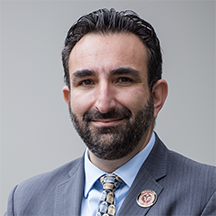
Microvascular Decompression
What is Microvascular Decompression (MVD) For Facial Pain?
Microvascular decompression (MVD) is a minimally invasive neurosurgical procedure designed to treat facial pain disorders by addressing their root cause. In many cases, facial pain such as trigeminal neuralgia, hemifacial spasm, or glossopharyngeal neuralgia is caused by an artery or vein compressing a cranial nerve. MVD surgery relieves this pressure by carefully repositioning the blood vessel (“decompression”) and placing a soft cushion (usually Teflon) between the vessel and nerve.
How the Procedure Works
MVD is performed through a keyhole retromastoid craniotomy—a small opening made behind the ear. Using advanced high-definition visualization with a microscope or endoscope, the neurosurgeon identifies the offending vessel and places tiny pads between it and the nerve. This “decompresses” the nerve, restoring normal function and reducing or eliminating pain.
Unlike other surgical approaches, MVD avoids significant brain retraction or direct nerve manipulation, which helps preserve nerve health and minimize side effects.
What to Expect During Surgery
- Duration: The surgery typically lasts about 3 hours.
- Hospital Stay: Most patients stay in the hospital for 2 nights after the procedure.
- Recovery: Patients usually resume normal activities within a few weeks, with many experiencing immediate or rapid relief from facial pain.
Benefits of Microvascular Decompression
- Addresses the root cause of facial pain by eliminating nerve compression.
- High success rate in providing long-term relief, especially for trigeminal neuralgia.
- Preserves nerve function better than destructive treatments.
- Minimally invasive approach with a small incision and limited recovery time.
Risks and Considerations
As with any surgery, MVD carries some risks. These may include:
- Infection or bleeding
- Cerebrospinal fluid (CSF) leak
- Hearing changes or balance issues
- Facial numbness or weakness (rare)
- Risks associated with anesthesia
Our neurosurgeon will discuss the potential benefits and risks to help determine whether MVD is the best option for your condition.
Who Is a Candidate for MVD?
Microvascular decompression is typically recommended for patients who:
- Have trigeminal neuralgia or other facial pain disorders caused by vascular compression.
- Have not found relief with medications or less invasive treatments.
- Are healthy enough to undergo a minimally invasive neurosurgical procedure.
Life After Microvascular Decompression
Many patients experience long-term relief following MVD and are able to return to normal daily activities with significantly improved quality of life. Regular follow-up visits with your neurosurgeon ensure proper healing and continued symptom management.


